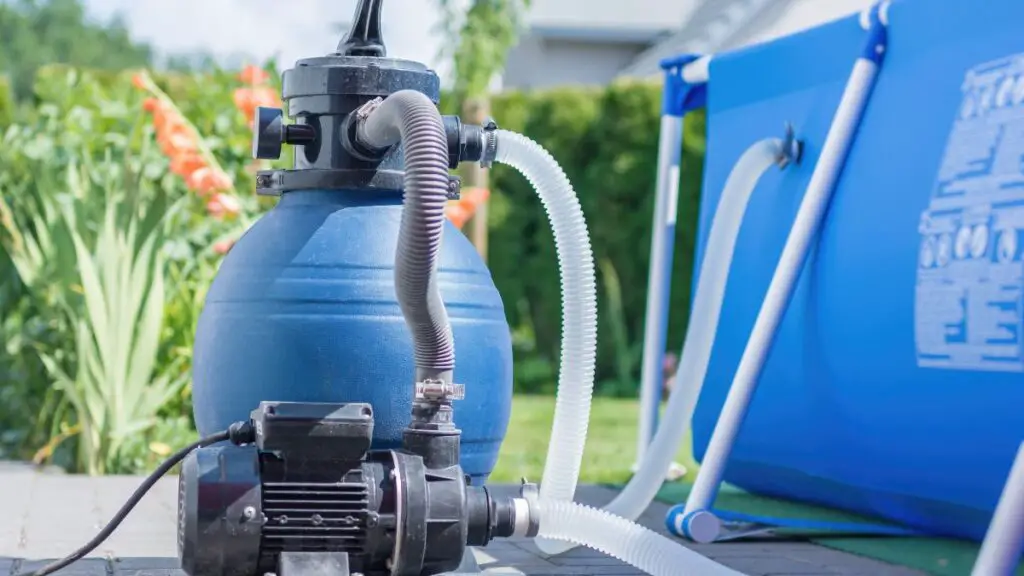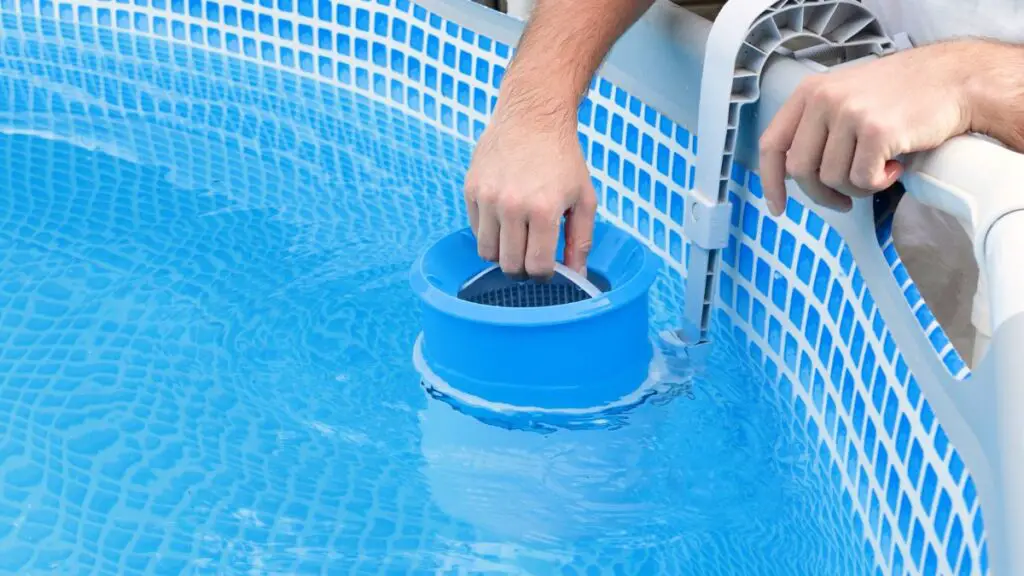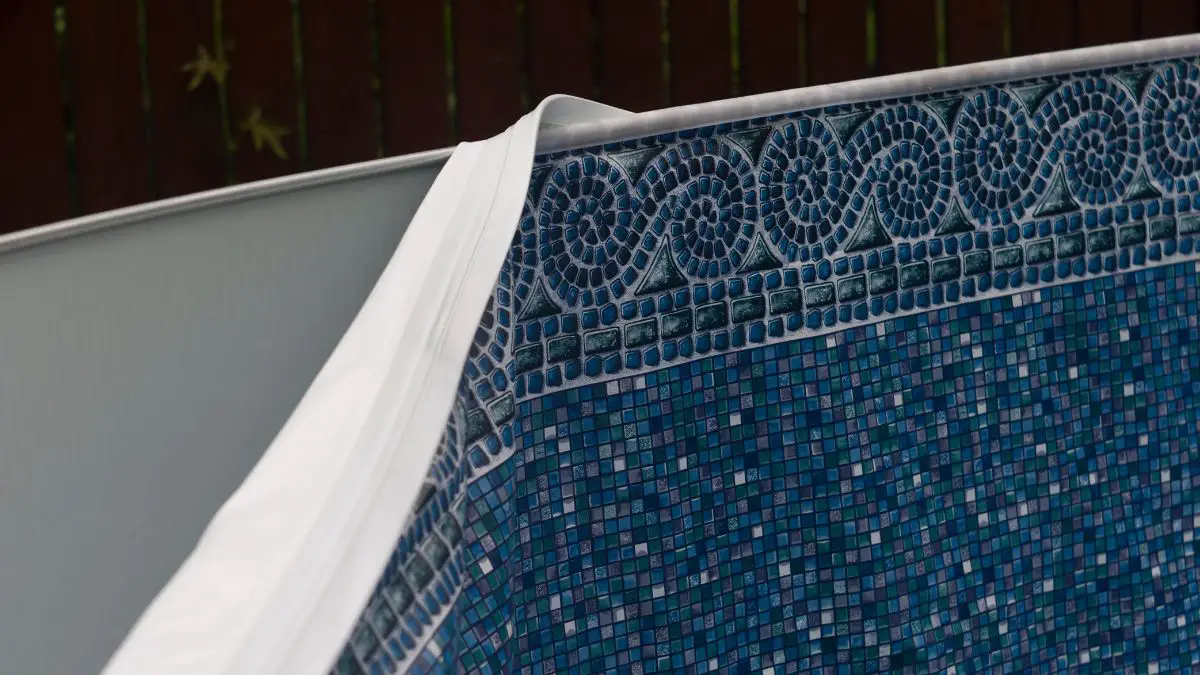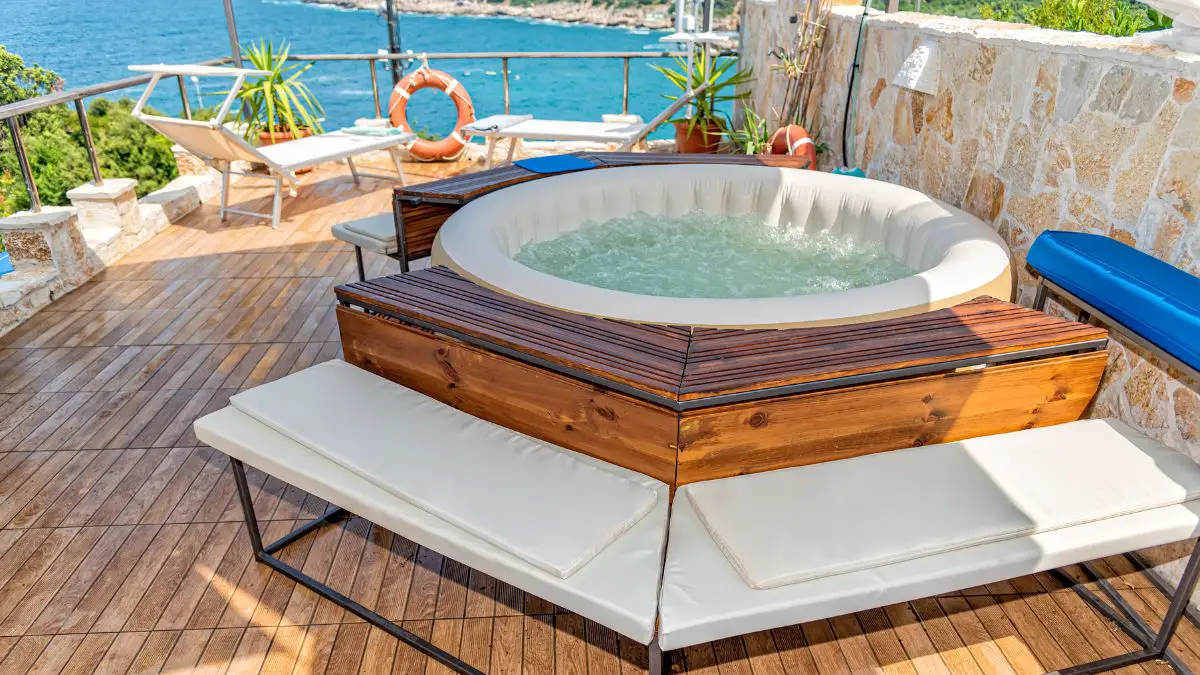Maintaining a clean sand filter is not just about keeping your pool water crystal clear. It’s about ensuring the health and safety of everyone who takes a plunge. A well-maintained sand filter is your first line of defense against unwanted particles and microorganisms that can cloud your pool water or even cause health issues.
Cleaning your pool’s sand filter might seem like a daunting task, but it’s actually a straightforward process. With the right tools and a bit of time, you can restore your sand filter to its optimal condition.
Regular cleaning of your sand filter, which involves backwashing, rinsing, and using a filter cleaner, is essential to maintain the clarity and cleanliness of your pool water. If you notice signs like cloudy water, increased pressure gauge reading, it’s time to clean your sand filter to ensure a safe and enjoyable swimming experience.
In this guide, you’ll learn the importance of a clean sand filter, the signs that indicate it’s time for a clean-up, and a step-by-step process on how to effectively clean your sand filter. Whether you’re dealing with an above-ground pool or an in-ground one, this guide will be your handy companion in ensuring your pool stays clean, clear, and safe for everyone to enjoy.
| Key Takeaways |
|---|
| A sand filter is a crucial part of your pool’s filtration system, trapping dirt and debris as pool water flows through it. |
| Regular cleaning of your sand filter is essential for maintaining the clarity and cleanliness of your pool water. |
| Signs that your sand filter needs cleaning include cloudy or murky water, increased pressure gauge reading, persistent algae blooms, slow water flow, and the need for frequent backwashing. |
| Tools needed for cleaning a sand filter include a pool test kit, backwash hose, filter cleaner, garden hose, protective gear, wrench or pliers, replacement sand, a soft bristle brush, a bucket, and Teflon tape. |
| The cleaning process involves backwashing, rinsing, cleaning with a filter cleaner, returning to filter mode, checking the filter pressure, and testing the pool water. |
| Common mistakes when cleaning a sand filter include not turning off the pump, skipping the rinse cycle, not using a filter cleaner, ignoring high filter pressure, not checking the sand, and forgetting to test the pool water. |
| Regular maintenance of your sand filter can extend its lifespan and keep your pool water sparkling clean. |
| Only use the type and grade of sand recommended by the filter manufacturer in your sand filter. |
| Replace the sand in your filter every 5-7 years, or if you notice the sand becoming clumped or calcified. |
| Regular testing of your pool water is an important step in maintaining the overall health and clarity of your pool. |

What is a Sand Filter?
You’ve likely heard the term ‘sand filter’ in relation to pool maintenance, but what exactly is it? A sand filter is a crucial component of your pool’s filtration system. It’s designed to keep your pool water clean and clear, providing you with a safe and enjoyable swimming experience.
Imagine a large tank, typically made of fiberglass, metal, or concrete. Inside this tank is a bed of special-grade sand. This sand isn’t your typical beach sand. It’s coarser, designed to trap dirt and debris as your pool water flows through it.
As you run your pool’s pump, it pushes water into the filter tank from the top. The water then percolates down through the sand bed, which acts like a net, catching and holding onto the impurities. The clean water is then returned to your pool through the bottom of the filter.
The beauty of a sand filter lies in its simplicity and efficiency. It’s a natural, low-maintenance solution for keeping your pool water pristine. Here’s a closer look at how it works:
- Filtration: This is the main process, where pool water is passed through the sand filter. As the water travels through the sand, particles and debris are trapped in the spaces between the sand grains.
- Backwashing: Over time, the sand filter collects a significant amount of debris, which can clog up the sand grains. This is where backwashing comes in. It’s a process of reversing the water flow to flush out the trapped dirt and debris out of the filter and out to waste.
- Rinsing: After the backwash process, the sand filter needs to be rinsed to settle the sand bed before starting the filtration process again. This is done by running water through the system for a short time but in the normal direction of flow.
- Waste or Drain: This setting is used when you need to lower the water level or remove a large amount of debris from the pool, like after a heavy storm.
Understanding the role of a sand filter and how it works is the first step in effective pool maintenance. With this knowledge, you’re well on your way to ensuring your pool stays clean and safe for everyone to enjoy. In the next sections, we’ll delve deeper into the importance of cleaning your sand filter, how to recognize when it needs cleaning, and the simple steps to clean it effectively. So, let’s continue this journey into the world of pool sand filter maintenance.
Why Cleaning a Sand Filter is Important
Imagine stepping into a pool, expecting a refreshing swim, only to find the water murky and unappealing. A dirty sand filter can turn your dream of a perfect swim into a nightmare. But the impact goes beyond just aesthetics.
A sand filter system plays a pivotal role in maintaining the clarity and cleanliness of your pool water. When it’s dirty, its ability to trap and remove impurities from the water is significantly reduced. This can lead to several issues:
- Cloudy Water: A dirty sand filter can’t effectively filter out impurities, leading to cloudy or discolored water. This not only looks uninviting but can also obscure visibility, making swimming potentially unsafe.
- Unhealthy Water: A poorly maintained sand filter can allow harmful bacteria and algae to thrive in your pool. This can lead to skin irritations, eye infections, and other health issues for swimmers.
- Inefficient Pool System: A clogged sand filter puts extra pressure on your pool pump as it struggles to circulate water. This can lead to higher energy consumption and potentially damage your pump, leading to costly repairs or replacement.
- Shortened Filter Lifespan: Regular cleaning extends the lifespan of your sand filter. Without it, the pool filter sand can become so clogged with debris that it might need to be replaced more frequently, adding to your pool maintenance costs.
Cleaning your sand filter system is not just a task to be done; it’s an essential part of pool maintenance. It’s about ensuring the health and safety of everyone who uses the pool, as well as prolonging the life of your pool equipment.
In the next section, we’ll look at the signs that indicate your sand filter needs cleaning. Recognizing these signs early can save you from potential risks and unnecessary costs. So, let’s continue this journey into the world of pool sand filter maintenance.
Signs Your Sand Filter Needs Cleaning
Just like any other piece of equipment, your sand filter gives off signs when it’s time for a clean-up. Recognizing these signs early can save you from potential risks and unnecessary costs. Here are some tell-tale signs that your sand filter needs cleaning:
- Cloudy or Murky Water: This is often the first sign that your sand filter is not working optimally. If your pool water is not as clear as it usually is, it might be time to clean your sand filter.
- Increased Pressure Gauge Reading: Your sand filter’s pressure gauge is a handy tool that can tell you when it’s time for a clean. A reading that’s 8-10 PSI above the normal range is a clear indication that your sand filter is clogged and needs cleaning.
- Algae Blooms: If you’re battling persistent algae blooms, your sand filter might be the culprit. A dirty sand filter can’t effectively filter out algae spores, leading to frequent algae problems.
- Slow Water Flow: Notice a decrease in your pool’s water flow rate? It could be due to a clogged sand filter. When the sand gets packed with debris, water can’t flow through it as easily, leading to reduced water circulation in your pool.
- Dirty Sand: Over time, the sand in your filter can become visibly dirty. If you notice that the sand is discolored or has a foul smell, it’s time for a clean.
- Frequent Backwashing Needed: If you find yourself needing to backwash your sand filter more frequently than usual, it might be because the filter is getting clogged more quickly and needs a thorough cleaning.
Remember, regular maintenance is key to keeping your sand filter and pool in top shape. By keeping an eye out for these signs, you can ensure your sand filter is cleaned as needed, keeping your pool water clean, clear, and safe for everyone to enjoy. In the next section, we’ll delve into the tools needed for cleaning a sand filter and the step-by-step process to do it effectively. So, let’s continue this journey into the world of pool sand filter maintenance.
Tools Needed for Cleaning a Sand Filter
Cleaning your sand filter is a straightforward process, but like any job, it requires the right tools. Having these at your disposal can make the process smoother and more efficient. Here’s a detailed list of what you’ll need:
- Pool Test Kit: Before you start the cleaning process, it’s important to test your pool water. This will give you a clear picture of your pool’s current state and help you understand how effectively your sand filter has been working.
- Backwash Hose: This is a crucial tool for the backwashing process. It’s used to direct the dirty water away from your pool during backwashing.
- Filter Cleaner: A specially designed sand filter cleaner can help remove oils and scale that can’t be eliminated by backwashing alone.
- Garden Hose: A garden hose with a high-pressure nozzle can be used to rinse the sand filter after backwashing and applying the filter cleaner.
- Protective Gear: Safety should always be your priority. Protective gear such as gloves and safety glasses can protect you from splashes of pool water or filter cleaner.
- Wrench or Pliers: Depending on your sand filter model, you might need a wrench or pliers to open the filter for deep cleaning.
- Replacement Sand: If your sand filter hasn’t been cleaned in a while, or if the sand has clumped together, you might need to replace the sand. Make sure to use only the type and grade of sand recommended by the filter manufacturer.
- Soft Bristle Brush: This can be used to gently scrub the interior parts of the filter if needed. Avoid using a wire brush or anything that could damage the filter components.
- Bucket: A bucket can be handy for catching any water or sand that might spill out when you open the filter.
- Teflon Tape: If your filter has threaded connections, you might need Teflon tape to reseal the threads after cleaning.
Remember, preparation is key. Having all your tools and materials ready before you start can make the cleaning process smoother and more efficient. In the next section, we’ll guide you through the step-by-step process of cleaning your sand filter. So, let’s continue this journey into the world of pool sand filter maintenance.

Step-by-Step Guide to Cleaning a Sand Filter
Cleaning your sand filter is a crucial part of pool maintenance. It’s a straightforward process that you can easily do yourself. Here’s a detailed, step-by-step guide on how to clean your sand filter:
Safety First
Before you start, remember to prioritize safety. Always turn off the pool pump before you begin the cleaning process to prevent any accidents. Wear protective gear, including gloves and safety glasses, to protect yourself from splashes of pool water or filter cleaner.
Step 1: Backwash Your Filter
Backwashing is the process of cleaning the filter by reversing the flow of water to flush out debris. Here’s how to do it:
- Turn off the pool pump.
- Turn the filter valve to the “Backwash” setting.
- Turn on the pump and let it run until the water in the sight glass (or the water coming out of the backwash hose) is clear. This usually takes about 2-3 minutes.
- Turn off the pump.
Step 2: Rinse the Filter
After backwashing, you need to rinse the filter to remove any remaining debris and to resettle the sand:
- Turn the filter valve to the “Rinse” setting.
- Turn on the pump and let it run for about 1 minute.
- Turn off the pump.
Step 3: Clean with a Filter Cleaner
For a deeper clean, use a sand filter cleaner:
- Turn the filter valve to the “Backwash” setting.
- Pour the recommended amount of sand filter cleaner into the strainer basket.
- Turn on the pump for a few seconds to allow the cleaner to enter the filter, then turn it off.
- Let the cleaner sit in the filter for the recommended amount of time (usually a few hours or overnight).
- Backwash and rinse the filter again to remove the cleaner and any remaining debris.
Step 4: Return to Filter Mode
Once you’ve finished cleaning, return the filter to its normal setting:
- Turn the filter valve to the “Filter” setting.
- Turn on the pump.
Step 5: Check the Filter Pressure
After cleaning, check the filter pressure to make sure it’s within the normal range. If the pressure is still high, you might need to repeat the cleaning process or check for other issues with your pool system.
Step 6: Test the Pool Water
Finally, test your pool water to make sure it’s properly balanced. If necessary, adjust the chemical levels to keep your pool water safe and clear.
Remember, regular cleaning can extend the life of your sand filter and keep your pool water sparkling clean. So, don’t neglect this important part of pool maintenance. In the next section, we’ll discuss some common mistakes to avoid when cleaning your sand filter. So, let’s continue this journey into the world of pool sand filter maintenance.
Common Mistakes When Cleaning a Sand Filter
Cleaning a sand filter is a straightforward process, but it’s not without potential pitfalls. Here are some common mistakes people make when cleaning their sand filters and how you can avoid them:
- Not Turning Off the Pump: Always remember to turn off the pump before changing the filter settings or starting the cleaning process. This is a crucial safety measure to prevent any accidents.
- Skipping the Rinse Cycle: After backwashing, it’s essential to rinse the filter. This step helps to remove any remaining debris and resettle the sand for effective filtration. Skipping this step can lead to poor filtration and cloudy pool water.
- Not Using a Filter Cleaner: Backwashing alone might not be enough to thoroughly clean your sand filter. Using a specially designed sand filter cleaner can help remove oils and scale that backwashing can’t eliminate.
- Ignoring High Filter Pressure: If your filter pressure is still high after cleaning, it’s a sign that something is wrong. It could be that the filter is still dirty, or there might be an issue with your pool system. Don’t ignore this sign; instead, investigate and address the issue.
- Not Checking the Sand: Over time, the sand in your filter can become clumped or calcified, reducing its effectiveness. Regularly check the condition of the sand and replace it as needed.
- Forgetting to Test the Pool Water: After cleaning your sand filter, always test your pool water to ensure it’s properly balanced. This is an important step in maintaining the overall health and clarity of your pool.
Remember, the key to effective pool maintenance is regularity and attention to detail. By avoiding these common mistakes, you can ensure your sand filter operates at its best, keeping your pool water clean, clear, and safe for everyone to enjoy. In the next section, we’ll share some maintenance tips to help you get the most out of your sand filter. So, let’s continue this journey into the world of pool sand filter maintenance.

Maintenance Tips for Sand Filters
Maintaining your sand filter is key to extending its lifespan and ensuring it operates efficiently. Here are some tips to help you keep your sand filter in top shape:
- Regular Backwashing: Make backwashing a regular part of your pool maintenance routine. How often you need to backwash depends on your pool usage and the amount of debris your filter collects, but a good rule of thumb is to backwash when the filter’s pressure gauge reads 8-10 PSI above the normal range.
- Use a Filter Cleaner: Regularly using a sand filter cleaner can help remove oils and scale that backwashing can’t eliminate. This can help maintain the effectiveness of your sand and reduce the need for deep clean.
- Check the Sand Regularly: Over time, the sand in your filter can become clumped or calcified, reducing its effectiveness. Regularly check the condition of the sand and replace it as needed.
- Monitor the Filter Pressure: Keep an eye on your filter’s pressure gauge. If the pressure is consistently high even after backwashing, it might be a sign that your filter needs a deep clean or that there’s an issue with your pool system.
- Balance Your Pool Water: Keeping your pool water balanced can reduce the strain on your sand filter and help it operate more efficiently. Regularly test your pool water and adjust the chemical levels as needed.
- Clean Out the Strainer Basket: Regularly cleaning out your pump’s strainer basket can reduce the amount of debris that ends up in your sand filter, helping it operate more efficiently.
Remember, regular maintenance can extend the life of your sand filter and keep your pool water sparkling clean water. So, don’t neglect this important part of pool maintenance. In the next section, we’ll answer some frequently asked questions about sand filters and their maintenance. So, let’s continue this journey into the world of pool sand filter maintenance.
FAQs About Clean Sand Filter
How often should I clean my sand filter?
The frequency of deep cleaning depends on your pool usage and the amount of debris your filter collects. However, a good rule of thumb is to backwash your sand filter when the pressure gauge reads 8-10 PSI above the normal range.
How do I know if my sand filter is working properly?
A properly working sand filter should keep your pool water clear. If you notice the water becoming cloudy or the filter pressure consistently high, it might be a sign that your sand filter is not working optimally.
Can I use any sand in my sand pool filter?
No, you should only use the type and grade of sand recommended by the pool filter manufacturer. Using the wrong type of sand can damage your filter and reduce its effectiveness.
How often should I replace the sand in my sand filter?
Typically, the sand in your filter should be replaced every 5-7 years. However, if you notice the pounds of sand becoming clumped or calcified, or if your filter is not working as effectively as it should, it might be time to replace the silica sand.
Remember
Regular maintenance is key to keeping your sand filter and pool in top shape. If you have any other questions about sand filters and their maintenance, don’t hesitate to ask. Let’s continue this journey into the world of pool sand filter maintenance.
Conclusion
Maintaining a clean sand filter is more than just a task on your pool maintenance checklist. It’s a commitment to ensuring the health and safety of everyone who enjoys your swimming pool. A well-maintained sand filter keeps your pool water clear, prevents the growth of harmful bacteria and algae, and extends the life of your swimming pool equipment.
Throughout this guide, we’ve explored the importance of a clean sand filter, the signs that indicate it’s time for a clean-up, and the step-by-step simple process on how to effectively clean your sand filter. We’ve also discussed the tools needed for the job, common mistakes to avoid, and maintenance tips to keep your sand filter in top shape.
Remember, the key to effective swimming pool maintenance is regularity and attention to detail. Make backwashing a regular part of your routine, use a sand filter cleaner for a deeper clean, and keep an eye on your filter’s pressure gauge. Regularly check the condition of the sand and replace it as needed. And, of course, always test your swimming pool water to ensure it’s properly balanced.
Cleaning your sand filter might seem like a daunting task, but with the right tools and a bit of time, you can do it. And the rewards are well worth the effort: a sparkling clean pool that’s safe and inviting for everyone to enjoy.
So, embrace the task of cleaning your sand filter. It’s an essential part of your role as a pool owner, and it’s a task that comes with its own rewards. Here’s to clear, clean pool water and safe, enjoyable swims. Let’s continue this journey into the world of pool sand filter maintenance together.








